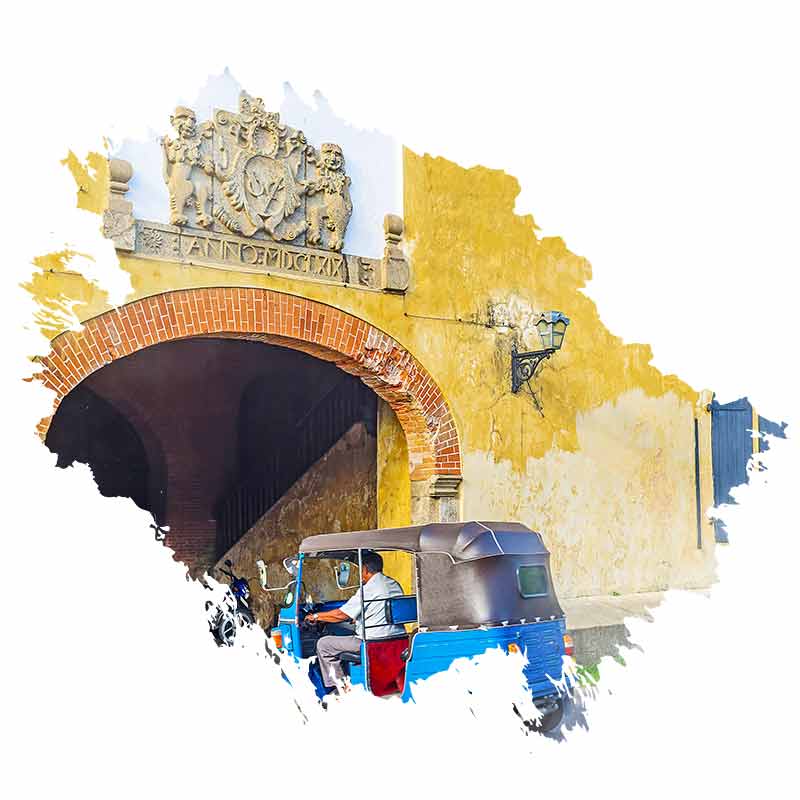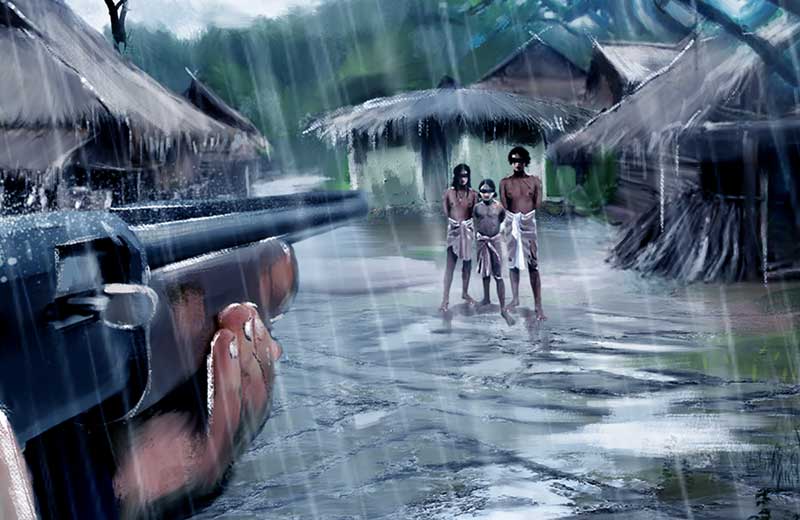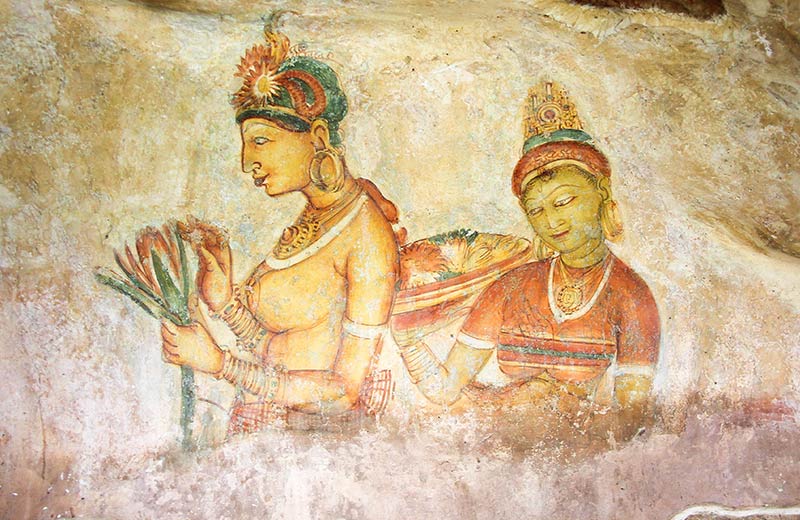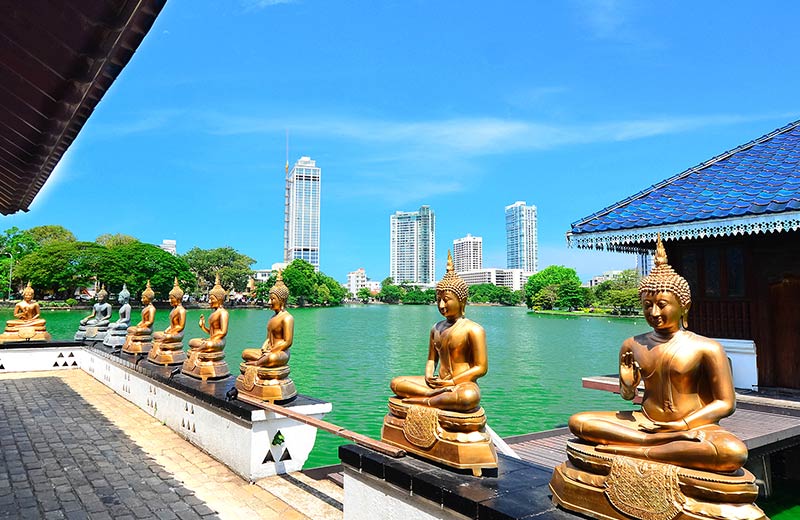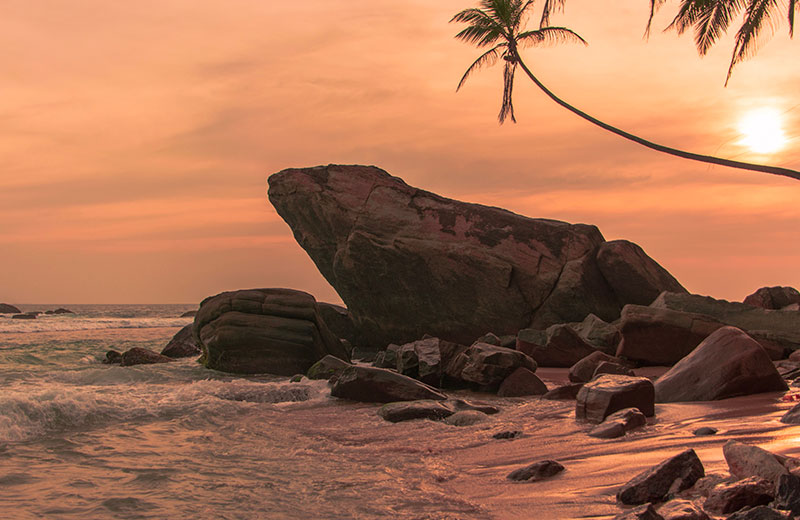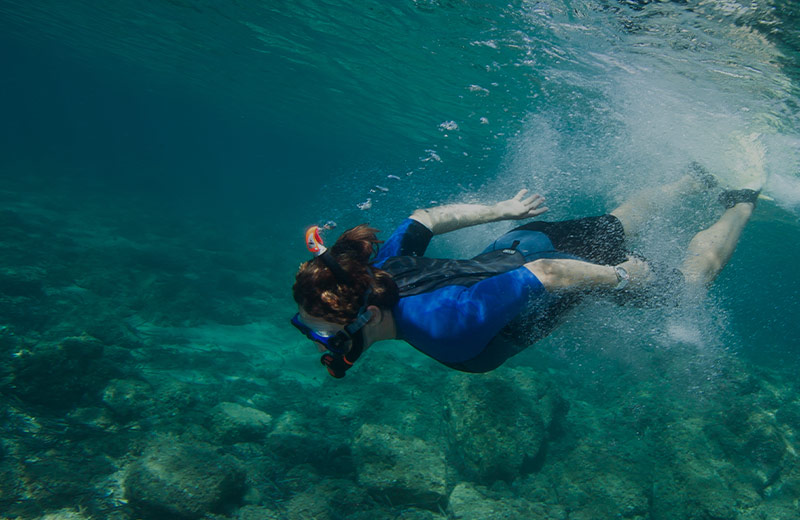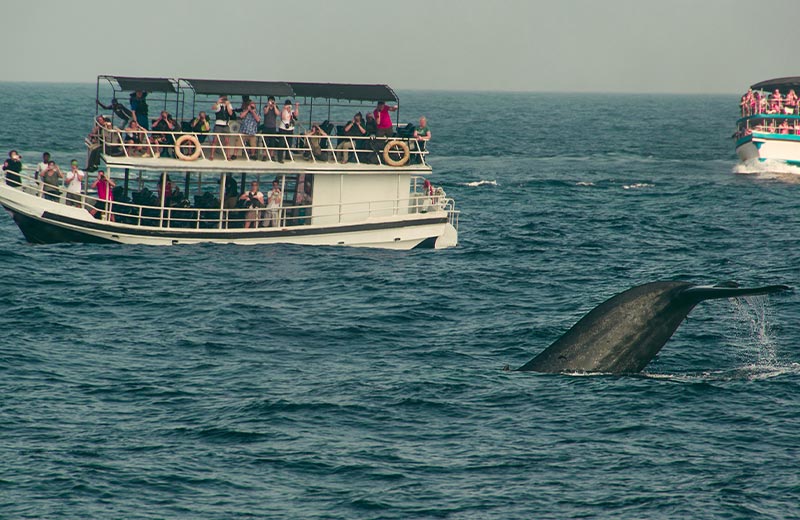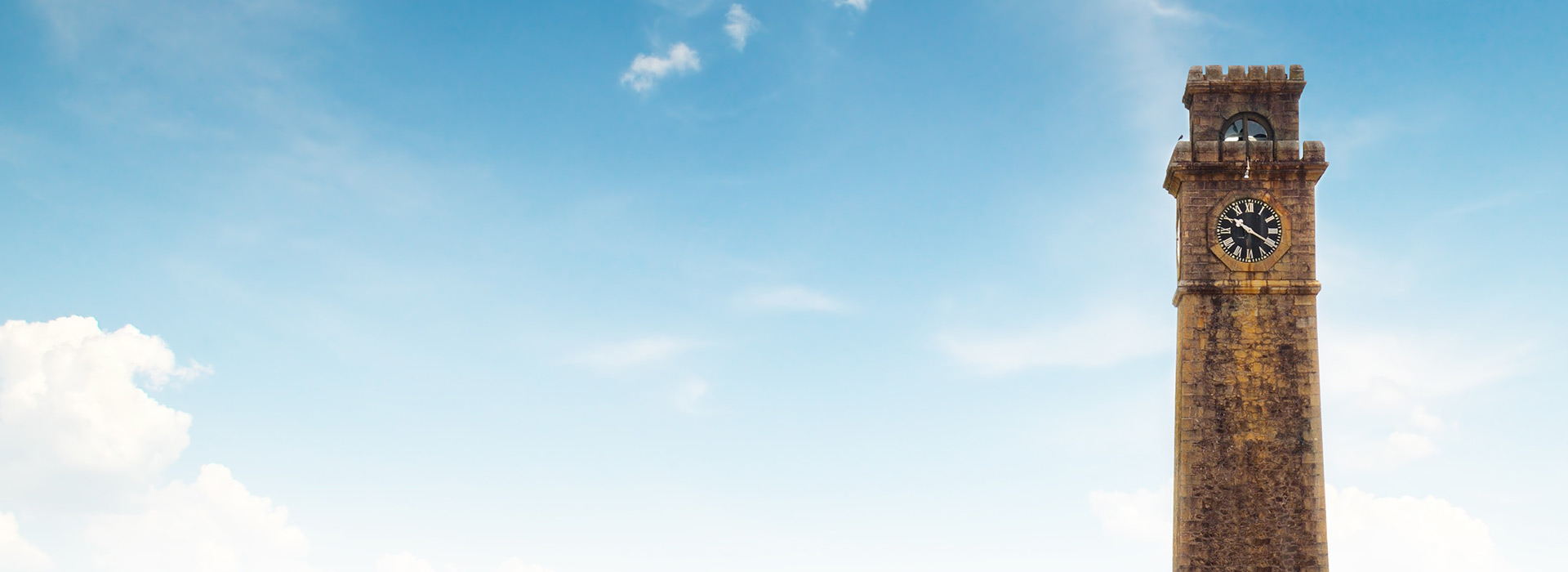The Port of Galle – An Ancient Trading Hub
The natural harbour off the coast of Galle is believed to have been a busy port pre-dating the Christian era, although it may have grown in importance only after the 12th century. Galle’s earliest historical record can be traced to Ptolemy’s world map of 125-150 AD when it was a port of trade for Greek, Arabic and Chinese traders. Galle is mentioned as a ‘port of call of the Levant’ in the cosmography of 6th century AD Greek merchant Cosmas Indicopleustes. Arab explorer Ibn Battuta also visited the port, which he recorded as Qali, in the mid-14th century. The Port of Galle appears in this manner, throughout history, thanks to its strategic location in the shipping trade routes of the Indian ocean.
Sri Lanka is a luscious land that has always been rich in natural resources. There are records of her ancient kings engaging in trade with many foreign nations, thanks to the abundance of agriculture, exotic wildlife and precious stones found on the island. James Emerson Tennent, who served as the colonial secretary of Ceylon from 1845-1850 asserted that Galle may have been the ancient biblical city referred to as Tarshish. Tarshish is referred to in the Hebrew Bible as a place far across the sea from the land of Israel. It is linked closely to King Solomon, being identified as the city where he obtained peacocks, gold, ivory, gems and spices such as cinnamon and pepper – all key trading goods of ancient Sri Lanka. This has led many to believe that Sri Lanka was indeed the land of Tarshish, open to the world via the Port of Galle. Even if King Solomon’s ships didn’t make it all the way to Galle, it is possible that they traded with merchants who had already procured these items from the trading port.
The great Chinese admiral, explorer and diplomat Zheng He commanded many expeditions to Southeast Asia, West Asia, South Asia and East Africa during the 15th century. He is believed to have visited Sri Lanka at least twice, and possibly five times, during this period. In 1411, the admiral erected a tablet to commemorate his second visit to the island. It is believed that the tablet was inscribed in Nanjing in 1409, before the fleet set sail on the voyage. What is most interesting about the tablet, apart from its historical significance regarding the explorations of the Chinese Ming Dynasty, is the fact that it was inscribed in three languages – Chinese, Tamil and Arabic. The inscriptions mention offerings to Buddha, the Hindu god Tenavarai-Nayanar and Allah, in the respective languages. This tactful diplomacy by Admiral Zheng is indicative that he was dealing with a cosmopolitan trading community – a community of different nationalities, cultures and religious beliefs. The Port of Galle is possibly one of the earliest examples of a cultural melting pot – where so many different people came together, their lives weaving and intertwining with each other.
The stone tablet was discovered in 1911 by provincial engineer H.F. Tomalin, covering a culvert near Cripps Road in Galle. There was great excitement for the discovery, but scholars were able to decipher the inscriptions only with great difficulty. Today, the original tablet is housed at the National Museum of Sri Lanka.
The Galle Fort – A Strategic and Economic Stronghold of Colonial Sri Lanka
The Arab, Indian, Malay and Chinese merchants dominated trade in the Indian Ocean till about the beginning of the 16th century. The region had a relatively long-standing open trade competition, and was not controlled by any one party. This began to change when the Portuguese joined the foray in the early 1500s with their armoured ships. The new force, backed by the high speed and fire power of their vessels, soon implemented a policy of control over trade in the region, undermining the so far peaceful system that was in place.
Portuguese Era
In 1505, a Portuguese sea captain, Lourenço de Almeida, was sent to explore the Maldives for the purpose of forming trade relations. However, due to contrary winds, Almeida’s fleet was knocked off course towards the coast of Galle. After a brief stop in Galle, the Portuguese vessels continued to sail along the western seaboard of the island and subsequently arrived in Colombo. Almeida was graciously welcomed by the reigning King of Kotte, Veera Parakramabahu. The Portuguese realized the commercial and strategic value of the island, which led to a settlement being established in the city of Colombo in 1518 for the purpose of trade.
The Portuguese were soon embroiled in the troubled politics of the Sri Lankan kingdom. In 1521, the reigning King of Kotte, Vijayabahu was killed by his three sons, who divided the land amongst themselves. The eldest brother continued to rule in Kotte, while the others set up independent kingdoms. As expected, the brothers started fighting each other in order to expand their respective kingdoms, and this led to the older brother, Buvanekabahu, relying on Portuguese assistance to keep his ambitious brother Mayadunne at bay. Buvanekabahu’s successor increased his reliance on the Portuguese, who were now benefitting economically for their support of the weak king. The Portuguese were momentarily stalled in their quest to take control of the island by King Rajasinghe, Mayadunne’s successor, who managed to launch a successful campaign against the Europeans and drive them out of Colombo.
Taking refuge in Galle, the Portuguese proceeded to hastily construct a fort named Santa Cruz de Gale, from earth and palisades in 1588. The fort consisted of a rampart and three bastions to defend the peninsula on the northern side, but didn’t extend to the seaward side, as the Portuguese believed it to be impregnable. Not much remains today of the Portuguese constructions, as they were almost completely replaced after the city fell into Dutch hands after the great Siege of Galle in 1640. The battle for the Galle Fort lasted over four days, with the Portuguese fighting valiantly to defend their position and the Dutch fighting hard to take control of the strategic location. Both sides suffered heavy losses, but the Dutch managed to finally capture the Santa Cruz de Gale on the fifth day of the siege.
Dutch Era
With this hard-won victory of the Galle Fort, the Dutch gained access to a large port and naval base, which assisted them to blockade Goa and attack Portuguese strongholds in southern India. They also gained control of valuable cinnamon lands, which generated the highest revenues in southern Sri Lanka. Galle became the Dutch headquarters in Sri Lanka, until the capture of Colombo in 1656. The new fort, constructed in stone and coral, was named Point de Galle by the Dutch, and remains to this day.
Unlike the Portuguese, the Dutch decided to encircle the entire peninsula by constructing impregnable fortifications, in anticipation of having to defend their position against other colonial forces that were bound to recognize the strategic and economic value of Galle. The Dutch proceeded to build a well-planned city in a grid layout within the fort, replete with public administration buildings, trade establishments, warehouses, armouries, barracks, a forge, carpentry, church and Dutch style houses which were occupied by approximately 500 families.
British Era
Great Britain began its occupation of Sri Lanka in 1796, when it settled in the coastal areas of the island with little resistance. The Galle Fort fell into the hands of the British at this time. In 1802, as a result of the Treaty of Amiens, the Dutch ceded control of the parts of Sri Lanka that they were occupying to the British crown. The British successfully invaded the Kingdom of Kandy in 1815, the last stronghold of the locals. With this victory, Great Britain controlled the entire island, a feat that neither the Portuguese nor the Dutch were able to achieve.
Although Colombo was the main headquarters of British Ceylon, the Galle Fort remained an administrative center in the south of the island. The British made some modifications to the fort to further fortify its defenses. They closed the moat, added a new gate, constructed a lighthouse, built blockhouses and constructed a tower to commemorate the jubilee of Queen Victoria in 1883. Further modifications were carried out during the Second World War to restore the defensive functions of the fort.
As the modifications carried out by the British were so few, the Galle Dutch Fort still retains much of its original plan. It is considered to be one of the best examples of a fortified city built by Europeans in south and southeast Asia, and is indeed an important vestige of the country’s troubled, yet colourful colonial past.
